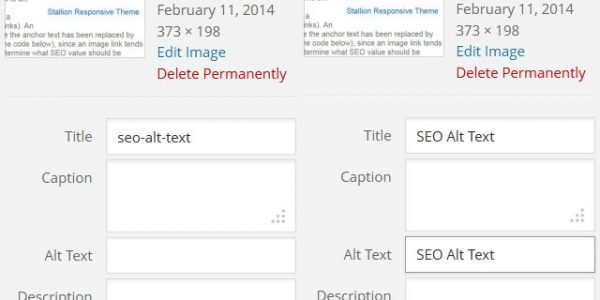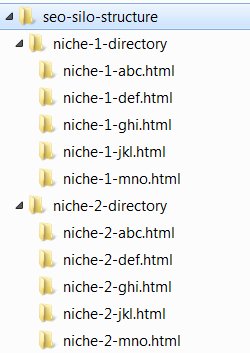Comment on WordPress SEO Tutorial 2014 Alt Text by SEO Dave.

A 301 redirect does redirect the link benefit that passes through the links to the 301 redirected pages, so the SEO benefit is the link benefit is recovered.
The SEO cost is a small amount of the link benefit (a dampening factor), I don’t know how much since Google doesn’t publish that sort of information, but they have indicated there’s a cost and why.
The reason for the cost is to remove any potential SEO benefit in chains of 301 redirects where page A redirects to page B which redirects to page C… I’ve not researched what the potential SEO benefit of a 301 redirect link chain could have, but it must have a potential blackhat SEO value** otherwise Google wouldn’t need to put a dampening factor on 301 redirects.
** As I wrote the above the blackhat SEO value of the above was obvious. Take 1,000,000 pages (they don’t have to exist) and redirect them in a massive 1,000,000 page 301 redirect chain. Every page generates a very small amount of intrinsic PR/link benefit, the amount is tiny, but have enough pages and the PR builds up. A setup like this would potentially be like having 1,000,000 links from indexed pages!!!
A best case scenario is the dampening factor deletes the PR/link benefit of the intrinsic value of a link from a page (this amount is irrelevant) so the 1,000,000 example above would be no better/worse than a 1 page redirect. More likely Google treats a 301 like a standard link which when Google’s founders developed the PageRank formula set the dampening factor at 15%. It’s probably not 15% today, but it won’t be much off 15%. If the dampening factor of a 301 redirect is the same as the dampening factor of a link assume you loose 15% of the link benefit by adding a 301 redirect, for the 1,000,000 page 301 redirect chain example it would be worthless.
I work on the assumption Google treats a 301 redirect as a link and the dampening factor is around 15%.
For your situation the best solution is to setup the 301 redirect script as you have done which recovers 85% of the PR/link benefit and long term find a solution to remove the attachment links, as you remove them you’ll recover the remaining 15%. I will add since these are deep links that will pass very little link benefit I wouldn’t loose too much sleep over this. If you have thousands of them it’s still not going to be that costly as for most WordPress sites there’s 100 links on every page, so each one of these attachments links uses 1% of the pages PR, you’ve recovered 0.85% with the 301 redirect so for your average WordPress page it’s wasting 0.15% of it’s PR. The sitewide link to your Privacy policy which has no SEO value (unlikely to rank for anything) is using 1% of your sites PR/link benefit (enough PR to generate a PR2 page) assuming your average page has 100 links.
Not a problem for you, but there is an SEO dilemma when dealing with 301 redirects from other sites. If you change a domain or page the general webmaster advice is setup a 301 redirect AND contact webmasters who link to your site/page and ask them to change the link. Sounds like a good idea, makes even more sense after learning Google adds a dampening factor to 301s right.
Unfortunately it’s not that straightforward, links from external sites (links not from the same domain) do not pass full SEO benefit from day one, it’s been called the Google sandbox which is far from the best name for this SEO link benefit time based dampening factor. Add a link today and it will pass full PR as seen on the Google ToolBar PR meter and other ways to check PageRank, but the full SEO benefit from a link is not passed for around a year! This is why old sites with a fair number of links rank far better than new sites with even more links, the new links aren’t passing full SEO benefit. Wait a year and full SEO benefit is passed.
What happens with 301 redirects?
When I’ve setup 301 redirects and not changed the original links the new site/pages quickly (within weeks) takes on the SERPs of the old site/pages (assuming you didn’t change the content too much), there might be small differences, but overall about the same SERPs. If you take the general webmaster advise of contacting the webmasters who own the links to your moved site and have them change the URL you in effect reset the one year full link benefit count which is far more costly than loosing the 301 redirect dampening factor!
This is not an issue for internal links, a link from the same domain passes full benefit pretty much immediately.
Fun to ponder :-)
David


More Comments by SEO Dave
WordPress SEO 2014 Alt Text
How to Optimize Images for Better Search Engine Rankings
That’s a really good point, a lot of webmasters forget about optimizing their WordPress images and taking just a minute or two extra can help both Google web search and Google image search results.
How to Optimize Images:
Firstly name your images …
Continue Reading Alt Text SEO Tutorial 2014
WordPress SEO 2014 Alt Text
WordPress Image Search Engine Optimization
When I started using WordPress the image code generated by WordPress was broken, used to miss out the end /A tag and didn’t add alt text, so I didn’t use the WordPress uploader, I’d upload images via FTP and create …
Continue Reading Alt Text SEO Tutorial 2014